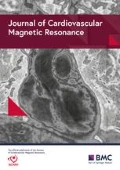Background
Recently two novels indicators of left ventricular (LV) performance assessed by Cardiovascular Magnetic Resonance (CMR) have been introduced: the LV global function index (LVGFI) and the LV mass/volume ratio (LVMVR). The LVGFI combines LV stroke volume, end-systolic and end diastolic volumes, as well as LV mass, integrating structural as well as mechanical behaviour. Elevated LVMVR is indicative of concentric remodelling. A LVGFI <37% and a LVMVR>1 were shown to be associated with the occurrence of cardiovascular events in no-thalassemic populations.
This retrospective cohort study aimed to systematically evaluate in a large historical cohort of thalassemia major (TM) in the CMR era whether the LVGFI and the LVMVR were associated with a higher risk of heart failure.
Methods
We considered 812 TM patients (391 M, 30.4±8.6 years), consecutively enrolled in the Myocardial Iron Overload in Thalassemia (MIOT) network. LVGFI and LVMRI were quantitatively evaluated by SSFP cine images. The T2* value in all the 16 cardiac segments was evaluated and a global heart T2* value <20 ms was considered indicative of myocardial iron overload (MIO).
Results
Eighty (9.9%) patients had a LVGFI<37% and, compared to the patients with a normal LVGFI, they showed a significant higher frequency of heart failure (43.8% vs 4.2%; P<0.0001). Patients with a LVGFI<37% had a significant higher risk of heart failure (odds-ratio-OR=17.59, 95%CI=9.95-21.09; P=<0.001). The risk remained significant also adjusting for the presence of MIO (OR=15.54, 95%CI=8.05-26.27; P=<0.001).
Thirty (3.7%) patients had a LVMVR≥1% and, compared to the patients with a normal LVMRI, they showed a significant higher frequency of heart failure (20.0% vs 7.7%; P=0.015). Patients with a LVMVR≥1% had a significant higher risk of heart failure (OR=3.01, 95%CI=1.18-7.64; P=0.021). The risk remained significant also adjusting for the presence of MIO (OR=3.44, 95%CI=1.31-9.01; P=0.012).
In a multivariate model including LVGFI, LVMVR and heart iron, the significant predictors of heart failure were a LVGFI<37% (OR=14.05, 95%CI=7.66-25.77; P=<0.001) and a global heart T2*<20 ms (OR=1.94, 95%CI=1.08-3.47; P=0.026).
Conclusions
In TM patients a LVGFI<37% was associated with an higher risk of heart failure, independent by the presence of MIO. A widespread program using CMR exploiting its multi-parametric potential can have considerable power for the early identification and treatment of patients at risk for heart failure.
Funding
The MIOT project receives "no-profit support" from industrial sponsorships (Chiesi Farmaceutici S.p.A. and ApoPharma Inc.).
Author information
Authors and Affiliations
Rights and permissions
This article is published under an open access license. Please check the 'Copyright Information' section either on this page or in the PDF for details of this license and what re-use is permitted. If your intended use exceeds what is permitted by the license or if you are unable to locate the licence and re-use information, please contact the Rights and Permissions team.
About this article
Cite this article
Meloni, A., Keilberg, P., Renne, S. et al. Left ventricular global function index and left ventricular mass volume ratio by CMR: relation with heart failure in Thalassemia major patients. J Cardiovasc Magn Reson 17 (Suppl 1), P346 (2015). https://doi.org/10.1186/1532-429X-17-S1-P346
Published:
DOI: https://doi.org/10.1186/1532-429X-17-S1-P346

